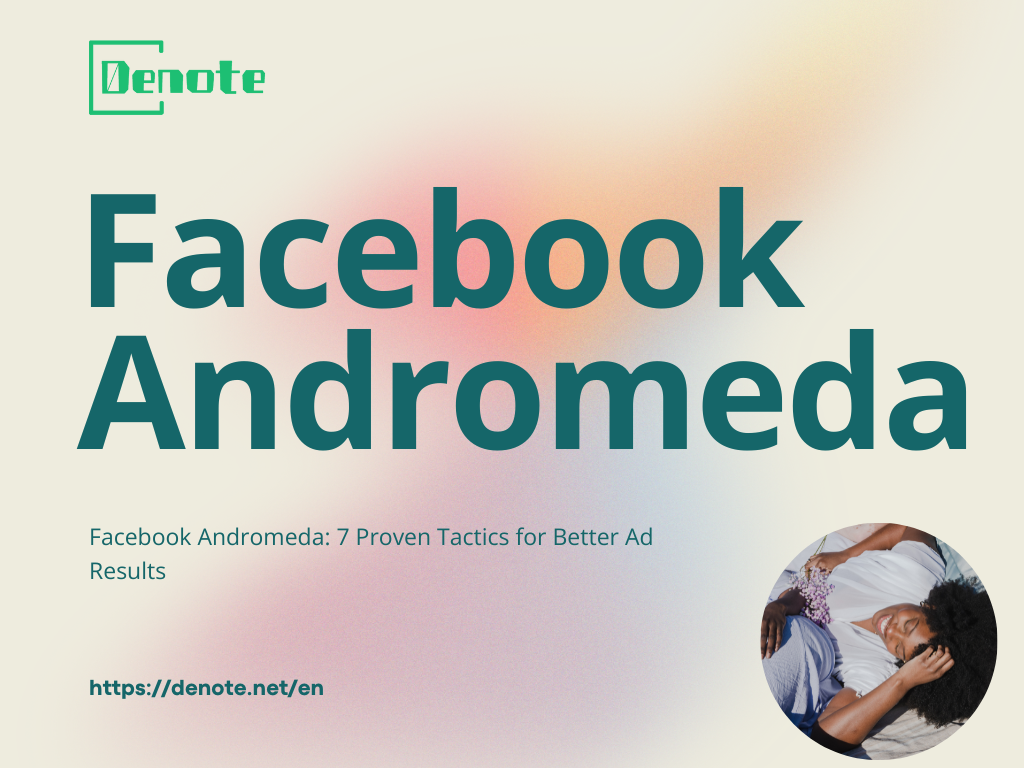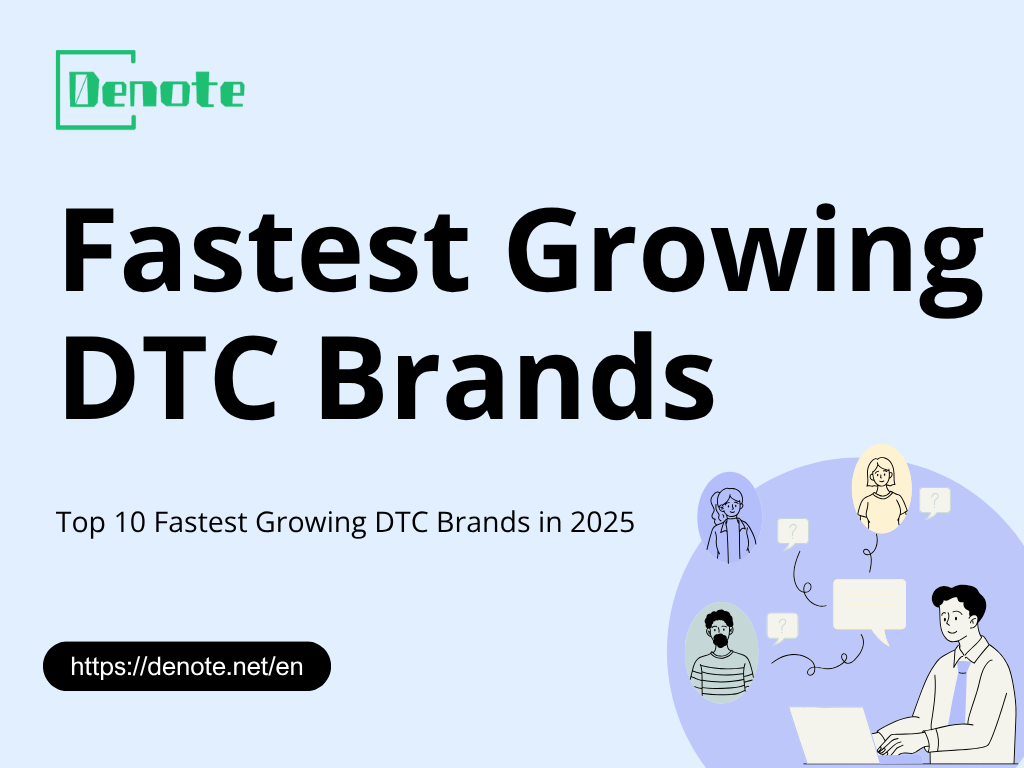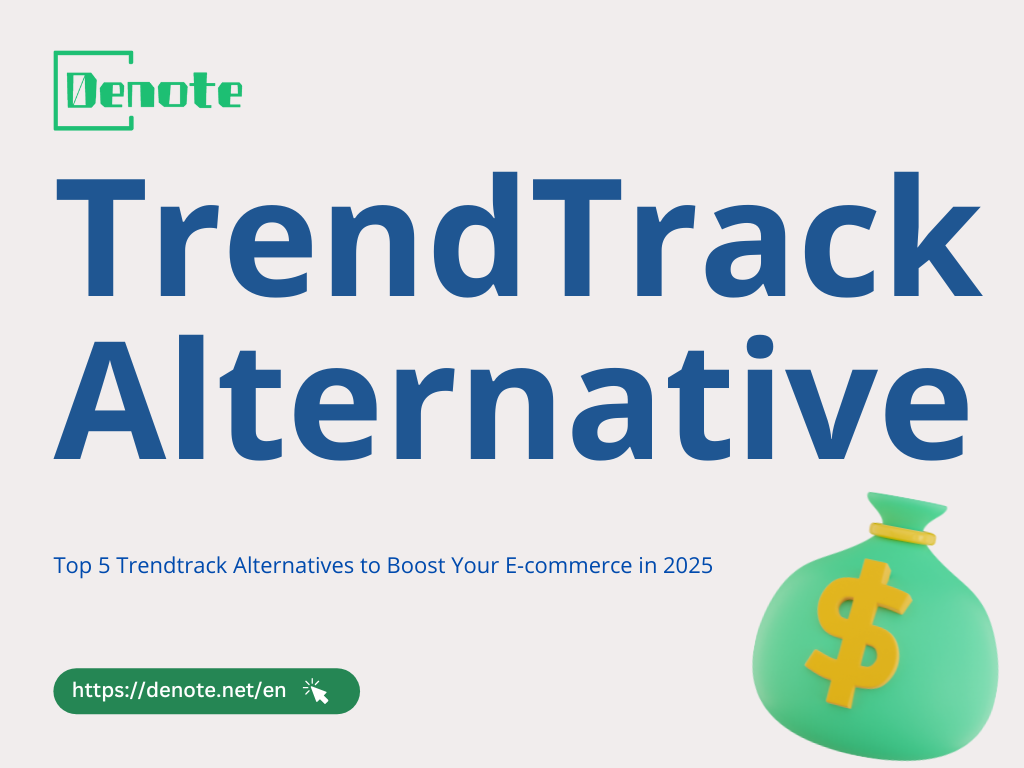The Best Atria Alternative to Create High-Converting Ads Faster
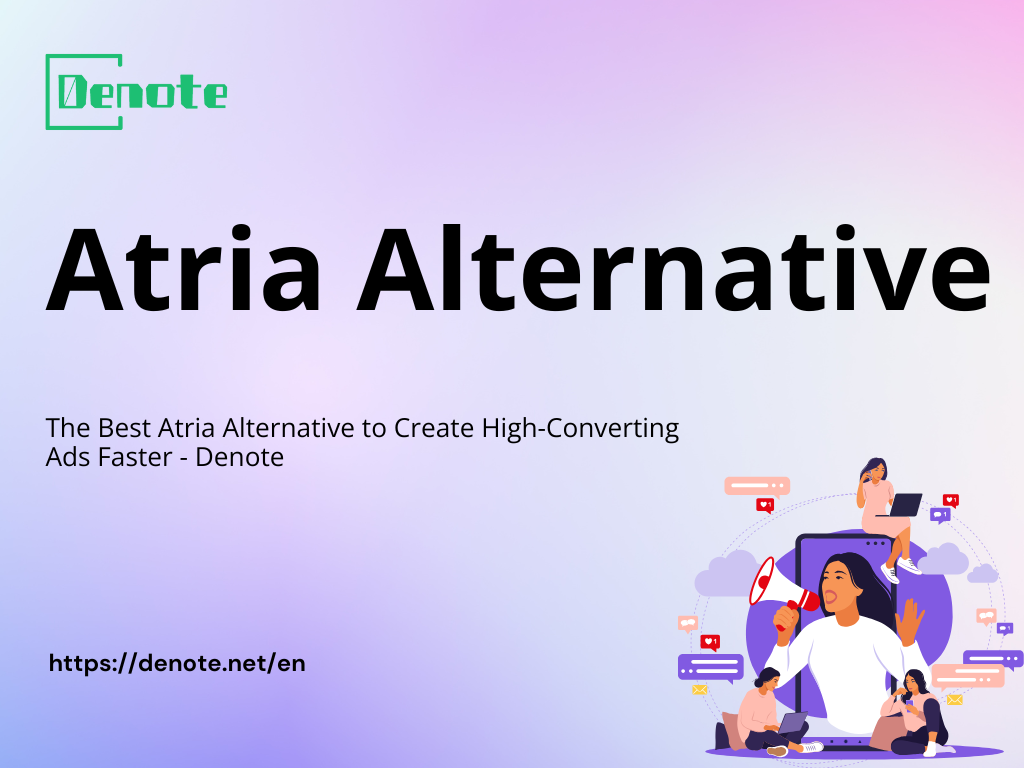
What Is Atria?
Atria bills itself as an “AI ad engine” that recommends winning opportunities, surfaces creative patterns, and helps teams generate ad concepts at scale. At its core, Atria is pitched as a 24/7 AI strategist — a platform built to suggest ideas, highlight “winning patterns,” and produce AI-driven ad variations and reports for brands and agencies. The product emphasizes automated recommendations, premade report exports, and an analytics layer that translates raw campaign data into next steps for scaling and refining creatives.
Think of Atria as a smart creative assistant: it watches your numbers, points to promising ads, and suggests how to scale them. For teams that want an AI to generate ad drafts and surface high-level recommendations, Atria’s pitch is appealing. But like any tool designed for breadth, there are tradeoffs — which leads many teams to hunt for an Atria alternative that emphasizes different parts of the creative workflow.
What Is Denote?
Denote positions itself as a hands-on, research-first creative platform focused on ad discovery, persistent ad libraries, and pragmatic AI assistance for creative teams. Rather than mainly proposing new ads from scratch, Denote specializes in capturing real live ads across platforms (Facebook Ad Library, TikTok, Instagram), preserving them, and turning those saved creatives into structured insights for teams to reuse. The site highlights features like one-click saves, boards/folders, advanced filters, bulk operations, and AI analysis that extracts hooks, transcripts, and ad components.

Denote’s messaging is practical: save more ads, keep them forever, analyze what actually performed, and give teams the tools to iterate quickly. It’s built for performance creative — the messy, iterative work of testing, remixing, and scaling ads — which is why many searchers are actively looking for an Atria alternative that supports real-world creative velocity rather than only AI generation.
Key, load-bearing facts about Denote include its ad library scale and workflow focus: the product advertises millions of saved ads, advanced export and download abilities, and team boards for collaboration. These are central strengths when assessing any Atria alternative.
Why Consider an Atria Alternative?
Switching tools always feels like a hassle. Still, product teams, media buyers, and creative leads keep circling back to the same thing: do we keep following Atria’s AI-first playbook, or is it time to try an Atria alternative that’s more focused on ad intelligence, persistence, and team workflows? Honestly, four real reasons push this question to the front.
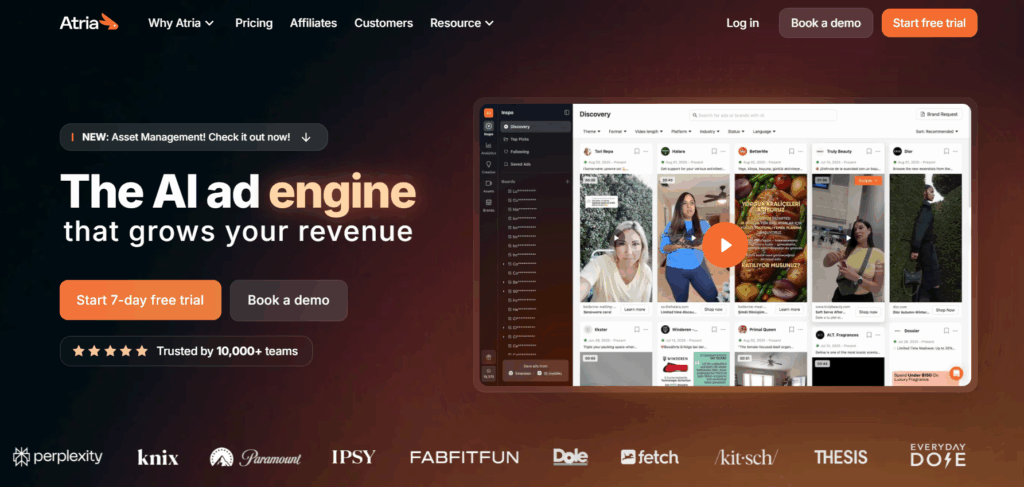
Gaps in Creative Research Capabilities
AI suggestions can be impressive, but let’s be real—they don’t fill the shoes of real creative research. Atria’s great for predictions and sparking ideas. But if you want to actually dig in and find what’s working out there, Denote brings a lot more to the table. You get huge ad libraries, powerful search, and filters that let you pull up ads by run time, views, landing pages, and plenty more details.
When your creative team is looking for inspiration—actual examples to shape storyboards, shots, or hooks—depth matters a lot more than just getting a few AI drafts. Denote hands you the real stuff: ads that ran, ads that worked, patterns you can see and twist into something new. It’s not about inventing in thin air; it’s about remixing what’s proven to connect.
Limitations in Competitive Insights
A tool can say “this style works,” but can it show the competitor’s actual landing page, run time, and ad copy in one place? Some marketers feel Atria surfaces patterns at a high level but lacks the persistent, exportable evidence that makes competitive analysis actionable. That’s why many teams searching “Atria alternative” want a platform that preserves competitor ads indefinitely, provides exportable fields (CSV, poster assets), and offers ad-level metadata for deeper analysis. Denote explicitly markets these capabilities — and that practical emphasis often tips the scales for data-driven teams.
Workflow Bottlenecks for Multi-Platform Teams
Trying to run ads on TikTok, Facebook, Instagram, and YouTube? Things get messy fast. If your designers have to dig through random links or a maze of folders just to find what they need, everything slows down. That’s where an Atria alternative with a smart workflow steps in. You get organized folders, boards, clear roles, version control, and batch actions—built to help teams stay on track without tripping over each other. Denote’s boards and team spaces tackle this head-on. They pull all your creative assets into one spot, cut down on duplicates, and make approvals way faster. That way, you go from idea to test in way less time.
Pricing & Scalability Considerations
Finally, price and scale matter. An Atria alternative might be more attractive if it offers transparent, predictable pricing or better value per seat and per asset for scaling teams. For growth teams running dozens of tests per week, the cost per creative saved, exported, and analyzed quickly becomes an operational metric. Denote presents tiered plans with bulk features and trial options that many teams evaluate when considering a move away from Atria.
Atria vs Denote: Feature Comparison
Comparing Atria and Denote is less about declaring a winner and more about matching each tool to the job you need done. Below, we compare the platforms through the practical lens of creative teams who must discover, build, and scale ads that convert.
Ad Discovery & Competitor Analysis
Real competitive insight requires both scale and granularity. That means a huge, searchable ad library plus the ability to understand context — landing pages, running time, and view counts — so you can judge the plausibility of a creative’s success.
Multi-Platform Ad Library Coverage
Denote stands out because it lets you quickly save ads from places like Facebook Ad Library, TikTok, and Instagram, then stash them on boards that last as long as you need. It’s simple: you get a lasting ad library that acts like your brand’s creative memory. While Atria leans into finding winning trends and making smart recommendations, Denote is better for teams that care about collecting and keeping great examples. If your priority is building a research archive, Denote just does it better.
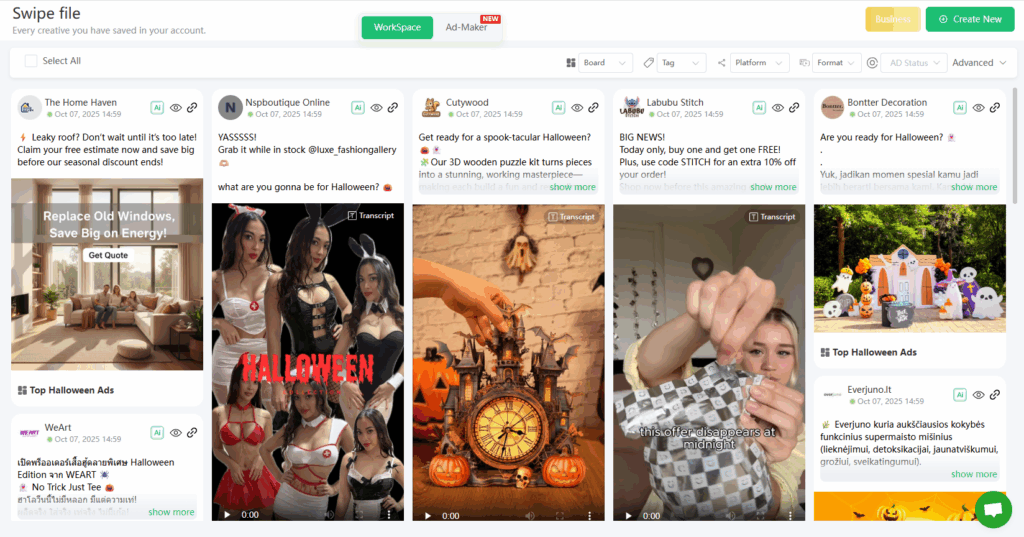
Search, Filters & Performance Signals
Filtering by platform, running time, ad views, and landing page gives you the ability to find patterns quickly. Denote offers advanced filters and extra Facebook/TikTok fields so you can sort for high-velocity ads or long-form demos. If your decision hinges on being able to pull 50 similar high-view ads in 30 seconds, the right Atria alternative is the one with robust, fielded search and exports — and that’s where Denote’s ad library tooling shows up as a time-saving weapon.
AI Creative Research & Concept Generation
AI in creative workflows can be used in two ways: to generate new ideas, or to analyze existing winning creatives and extract repeatable rules. Atria leans toward the former, while Denote emphasizes the latter — and there’s a meaningful difference.
Trend Analysis & High-Converting Patterns
Denote’s AI digs into real ads and picks out the hooks, visual cues, and copy tricks that actually work out in the wild. It spots the patterns that keep showing up, the stuff that’s already proven itself with real people. If your team wants A/B tests based on what’s worked before—not just guesses—this is the tool for you. On the flip side, Atria takes a different route. It sifts through all the noise, pulls out what matters, and hands you a focused list of ideas worth testing. It’s a solid backup for creative teams who want a little more direction.
Script, Storyboard & Style Suggestions
Atria will often produce generated scripts and campaign templates — a rapid way to prototype copy and concepts. Denote, as an Atria alternative, provides AI-assisted script suggestions derived from actual ads, plus tools to transcribe, clip, and repurpose video content. That difference matters: one approach invents; the other learns from what has already worked. For teams running heavy test volumes, learning-from-live-ads tends to reduce wasted creative cycles.
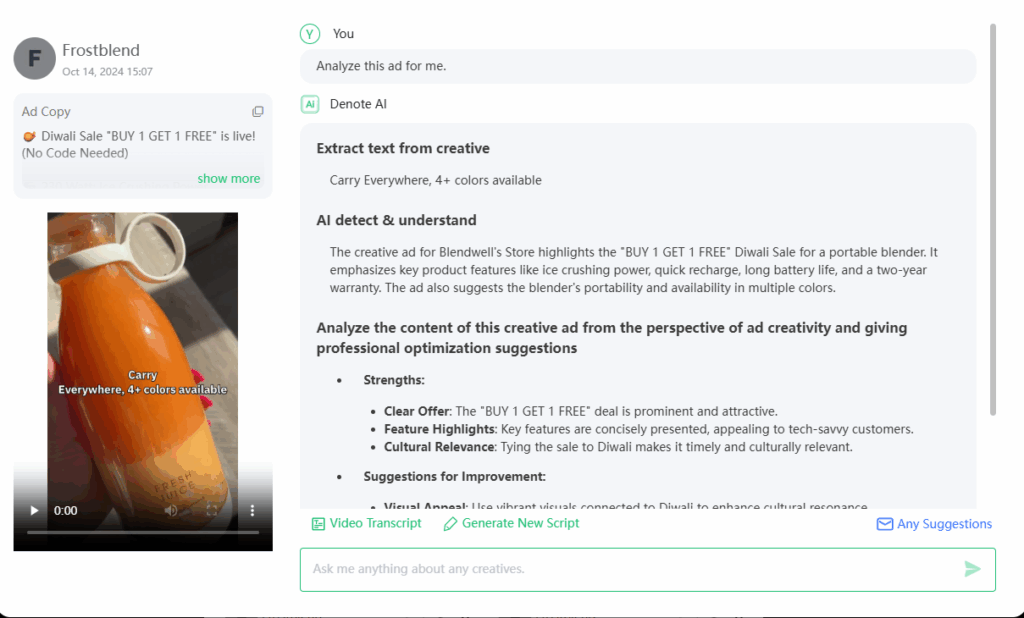
Creative Asset Management & Workflow
Creative teams rarely run out of ideas. The real problem? Ideas slip through the cracks, feedback drags on forever, and approved files get buried in endless Slack threads or lost somewhere in Google Drive. When you stack up Atria against Denote, this is where the difference really stands out.
Atria’s all about insights and suggestions, which sounds good on paper. But if your team needs a system that actually keeps track of everything—saving ads, managing versions, the whole deal—Denote gives you way more control over the process. As your creative team grows, having that level of organization stops being a nice-to-have and turns into something you just can’t do without.
Cross-Team Collaboration
Denote includes team boards, shared folders, role permissions, and collaboration features designed for designers, editors, media buyers, and creative strategists to work in one place. A single “source of truth” lowers friction and prevents the usual chaos of duplicated assets or unclear approvals.
If your team regularly exchanges files, clips, and variations, an Atria alternative like Denote gives you a space that feels more like a real creative hub, rather than a recommendation engine.
Versioning, Tagging, and Shared Libraries
High-performing creative teams generate dozens of variations every week. Without versioning, tagging systems, or sortable shared libraries, it’s easy to lose track of what was tested, what performed, and what didn’t.
This is where Denote stands out as a practical alternative to Atria. It lets users:
- tag creatives by product, concept, platform, or performance
- organize ads chronologically
- maintain permanent archives of high performers
- quickly retrieve older iterations
- share updates with stakeholders in moments
This reduces creative drift and keeps teams aligned on what’s been tested and what’s still on the table.
Performance Feedback & Optimization
Atria brings automated “winning pattern” reports and suggestions, which is helpful for high-level decision-making. But some teams prefer a data-backed Atria alternative that allows deeper, hands-on analysis instead of relying exclusively on AI-generated summaries.
What Atria Measures
Atria looks at the big picture. It picks up on campaign trends, points out what’s working, and offers ideas for next steps. You’ll see high-level summaries about which kinds of ads tend to do better, plus tips for scaling up or trying something new.
That’s great if your team wants a strategist in your corner, someone mapping out the road ahead. But if you’re a creator who needs hands-on, detailed feedback, Atria might feel a bit too distant.
What Denote Adds for Creative Decision-Making
Denote combines performance insights with actual saved creatives, contextual metadata, transcripts, thumbnails, and landing page snapshots. For many performance teams comparing Atria vs Denote, this alone justifies switching to an Atria alternative.
Because Denote ties insights directly back to specific creatives, it answers questions like:
- Why did this ad work?
- What hook did it use?
- How long was the intro?
- What was the product frame rate or pacing style?
- What landing page did it drive to?
This grounded approach helps teams build testable hypotheses and iterate quickly — something pure “AI suggestions” struggle to replicate without visual context.
Why Denote Is the Best Atria Alternative for Creative Teams
When teams compare Atria vs Denote in real workflows, they often arrive at a simple conclusion: Atria helps you ideate fast, but Denote helps you create, research, and execute faster — which is ultimately what performance teams need. Below are the core reasons Denote stands out as the strongest Atria alternative.
A Research-First Approach to Better Creative Strategy
A lot of ad platforms promise “AI that replaces creative strategy,” like it’s some kind of magic trick. Honestly, that’s not how it works. AI only gets interesting when you build it on solid research. That’s where Denote shines. It keeps track of real ads, marks them up, and turns all that raw material into insights you can actually use.
So, you’re not just guessing. You get to see real ads, break them down, sort them, and spot patterns the same way creative pros do. It’s practical, not hype.
End-to-End Workflow: Discover → Save → Organize → Create
Denote doesn’t just help you brainstorm — it carries you from the spark of an idea all the way to a ready-to-test creative. Its workflow intentionally mirrors how high-performing teams operate:
- Discover ads across platforms
- Save relevant creatives instantly
- Organize assets into boards, themes, and campaigns
- Create new concepts with AI-assisted research and scripts
As an Atria alternative, Denote excels because it doesn’t interrupt your creative rhythm. Instead, it accelerates every stage.
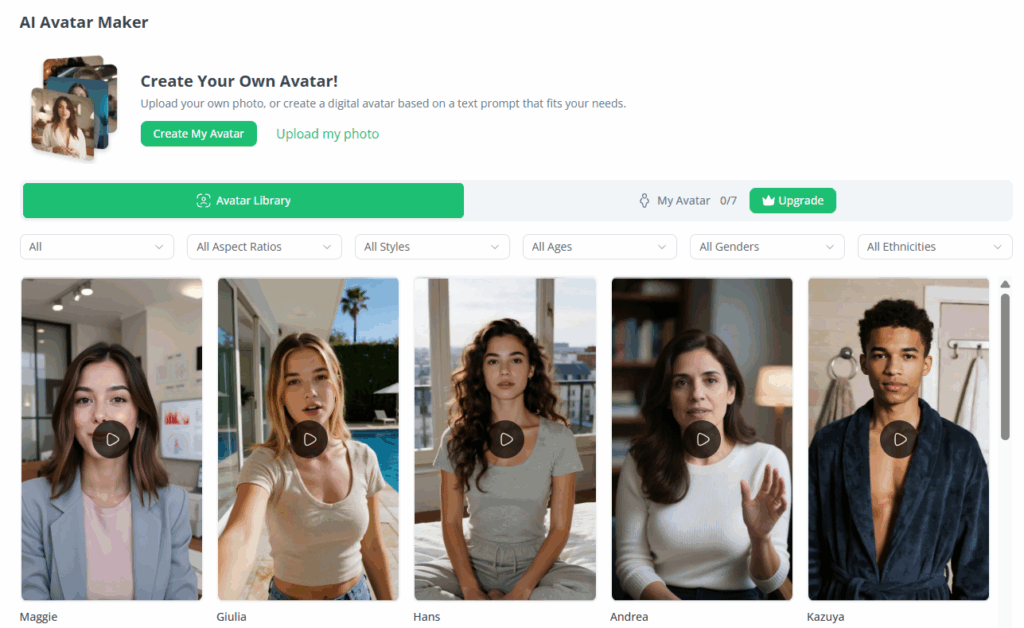
Stronger Insights for Creative Testing & Iteration
Winning ads aren’t born from inspiration — they’re born from iteration. Denote’s research-first tooling gives teams a structural advantage: they see what’s working now, not just what the AI predicts.
Teams describe this as “creative clarity”: it becomes easier to justify new test ideas, easier to create hypotheses, and easier to scale winners.
Seamless Collaboration Across Designers, Editors & Marketers
Cross-functional teams often describe their workflows as “organized chaos.” Denote’s collaborative boards, shared folders, and team spaces create alignment by default — which is crucial when producing 20, 40, or 100 variations per month.
In this sense, Denote isn’t just an Atria alternative — it’s a creative operations layer.
Predictable, Transparent Pricing for Growing Teams
A lot of people look for an “Atria alternative” because they want better value for their money. Creative work keeps piling up every month, but no one wants their costs to spiral out of control. Denote keeps things simple—clear pricing that adjusts with your team’s size and what you actually need. If your team cranks out a ton of creatives, you’ll appreciate how straightforward it is. No surprises, just easy budgeting.
Use Cases: Which Tool Fits Your Team?
Choosing the right Atria alternative depends on the type of work your team does. Below are five common scenarios based on real-world creative operations.
For Performance Marketing Teams
You need speed, clarity, and structured research. Denote excels by giving you a massive ad library, deep filters, instant saves, and AI insights tied to real creatives.
For eCommerce & DTC Brands
DTC teams rely heavily on iterative testing. Atria gives high-level suggestions, but Denote’s archive of real ads helps teams spot competitor offers, hooks, UGC layouts, and landing pages.
For TikTok Shops & Short-Video Advertisers
Short-form creative changes quickly — too quickly for static templates. Denote’s multi-platform search and TikTok-friendly workflows fit fast-paced content cycles.
For Creative Agencies Managing Multiple Clients
Agencies juggle 5, 10, or 20 clients with wildly different creative needs. Denote’s shared libraries and version control help agencies maintain creative memory across all clients without losing track of what was tested.
For Solo Creators Needing Fast Research + Concepts
Solo creators benefit from the “smart assistance” of AI-researched insights without losing the authenticity of human creativity. Denote becomes a personal creative research partner.
How to Create Better Ads with Denote (Step-by-Step)
Want to understand how an Atria alternative like Denote speeds up actual creative work? Here’s a practical, real-world workflow.
Step 1: Find Competitor Ads Across All Major Platforms
Begin by leveraging Denote to uncover ads from leading platforms like TikTok, Facebook, and Instagram. The process is simple—just enter your search criteria, apply relevant filters, and explore a rich feed of real competitor ads. What sets this apart is the sheer breadth and depth of creative examples at your fingertips, letting you quickly identify emerging trends, recurring messaging, and creative executions that are resonating with audiences. As you scroll, you’ll not only see what’s popular, but also gain a sense of the evolving competitive landscape and the specific tactics that are currently driving engagement and conversions.
Step 2: Analyze Creative Trends and High-Performing Tactics
Denote’s AI-driven insights take your research further by automatically dissecting each ad’s creative elements. It highlights attention-grabbing hooks, dominant visual styles, pacing, copy structures, and unique selling propositions that consistently appear in top-performing ads. This automated analysis saves you hours of manual work and ensures you don’t overlook subtle, but powerful, trends shaping the market. Treat this as having a round-the-clock creative strategist that draws actionable conclusions from every piece of content, helping you understand not just what works, but why it works, and where opportunities exist to differentiate your brand’s creative.
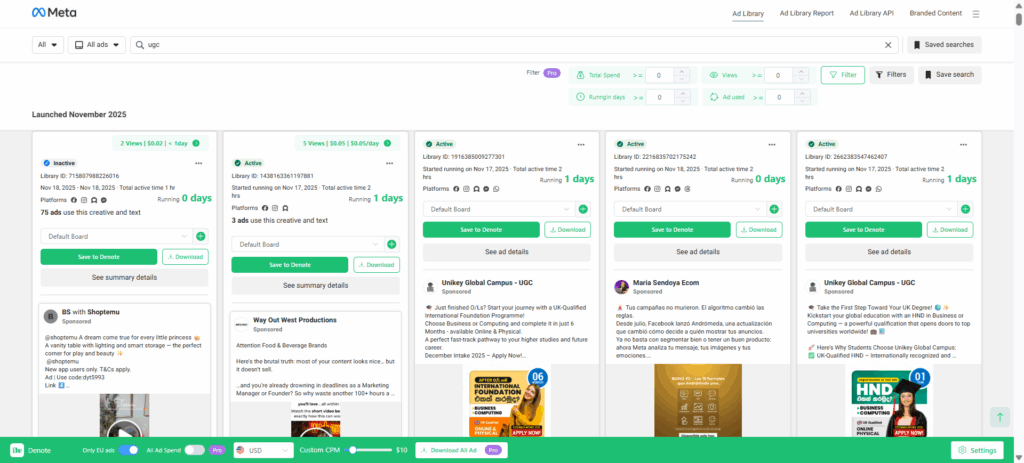
Step 3: Save, Tag, and Organize for Team Collaboration
As you identify standout ads and effective creative strategies, you can seamlessly organize your findings into boards or folders tailored to your workflow. Whether you’re categorizing by campaign type, messaging angle, product line, or funnel stage, this organized library becomes a shared resource for your entire team. By tagging ads by concept or strategic purpose, you empower strategists, editors, and designers to access a curated bank of proven inspiration. This collaborative hub breaks down silos, accelerates brainstorms, and ensures that everyone is aligned around what’s performing in your space.
Step 4: Transform Research into Scripts, Angles, and New Creative
With a wealth of organized examples and insights, your creative development process becomes more strategic and grounded. Use Denote’s tools to generate scripts, brainstorm fresh hooks, outline new angles, and experiment with innovative layouts. Because every idea is rooted in real-world ad performance, your team’s creative output is not just original, but also validated by market data. This approach minimizes guesswork, sharpens your messaging, and increases the likelihood that your new concepts will drive actual results.
Step 5: Monitor Performance, Iterate, and Optimize Continuously
Launching creative is just the beginning. Denote makes it easy to track the effectiveness of your campaigns by connecting your research directly to performance outcomes. Regularly review which ads, hooks, and concepts have delivered the strongest results, and use these learnings to refine your future efforts. This continual feedback loop is essential for sustained growth, enabling your team to stay ahead of shifting trends and adapt quickly to what’s working now. Ultimately, this cycle of research, creation, and optimization is what distinguishes Denote as the top alternative to Atria for creative teams committed to measurable performance and ongoing improvement.

Conclusion
If you’re looking for the best Atria alternative, the right choice depends on the type of creative work you do — but for performance-focused teams that value research, competitive insights, collaboration, and creative iteration, Denote is the strongest alternative to Atria.
Where Atria emphasizes AI-driven suggestions, Denote emphasizes real ad research, actionable insights, and team-friendly workflows that help you create high-converting ads faster. That’s why more teams are searching for tools that pair AI with evidence, and why Denote continues to stand out as the most complete, practical Atria alternative available today.

